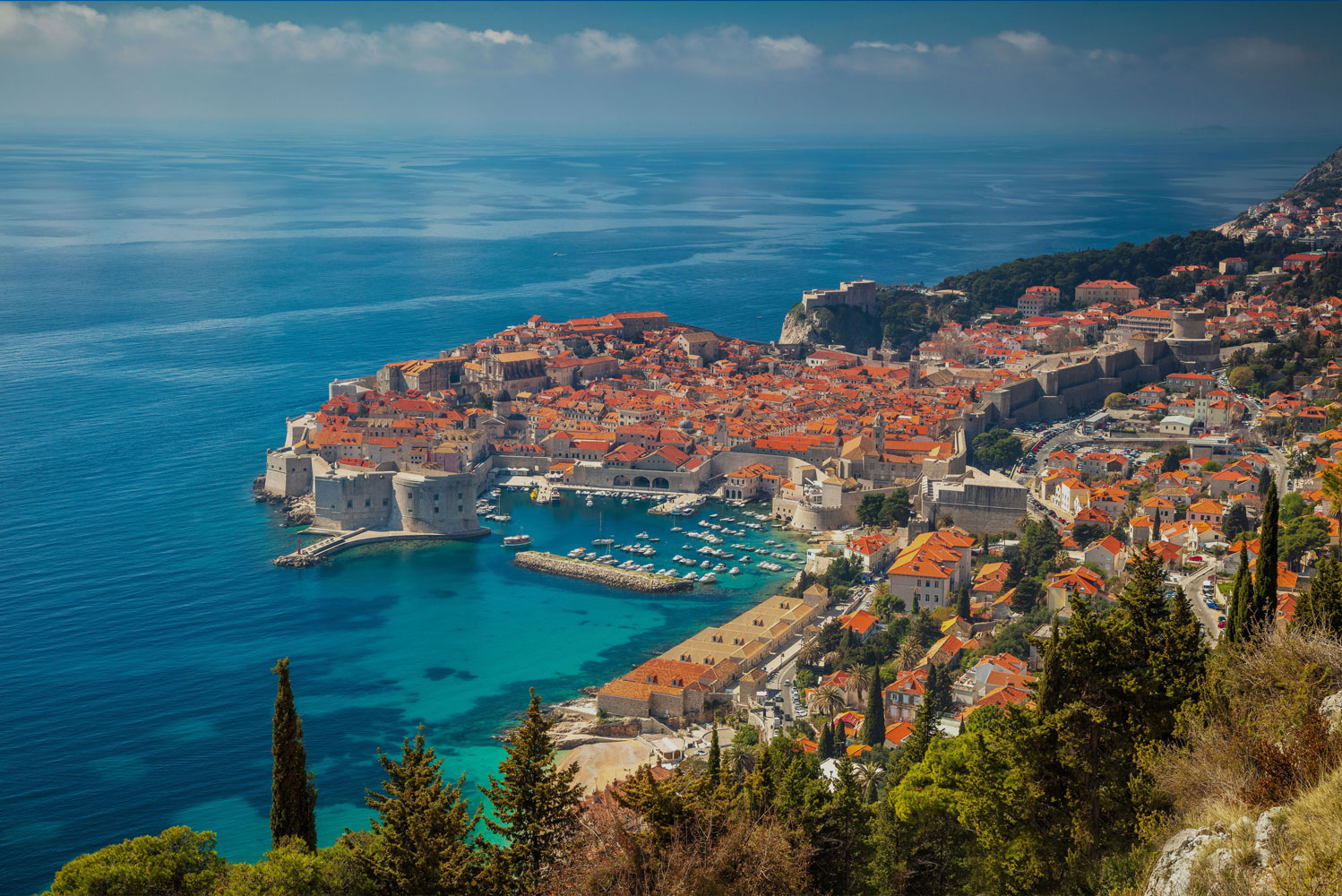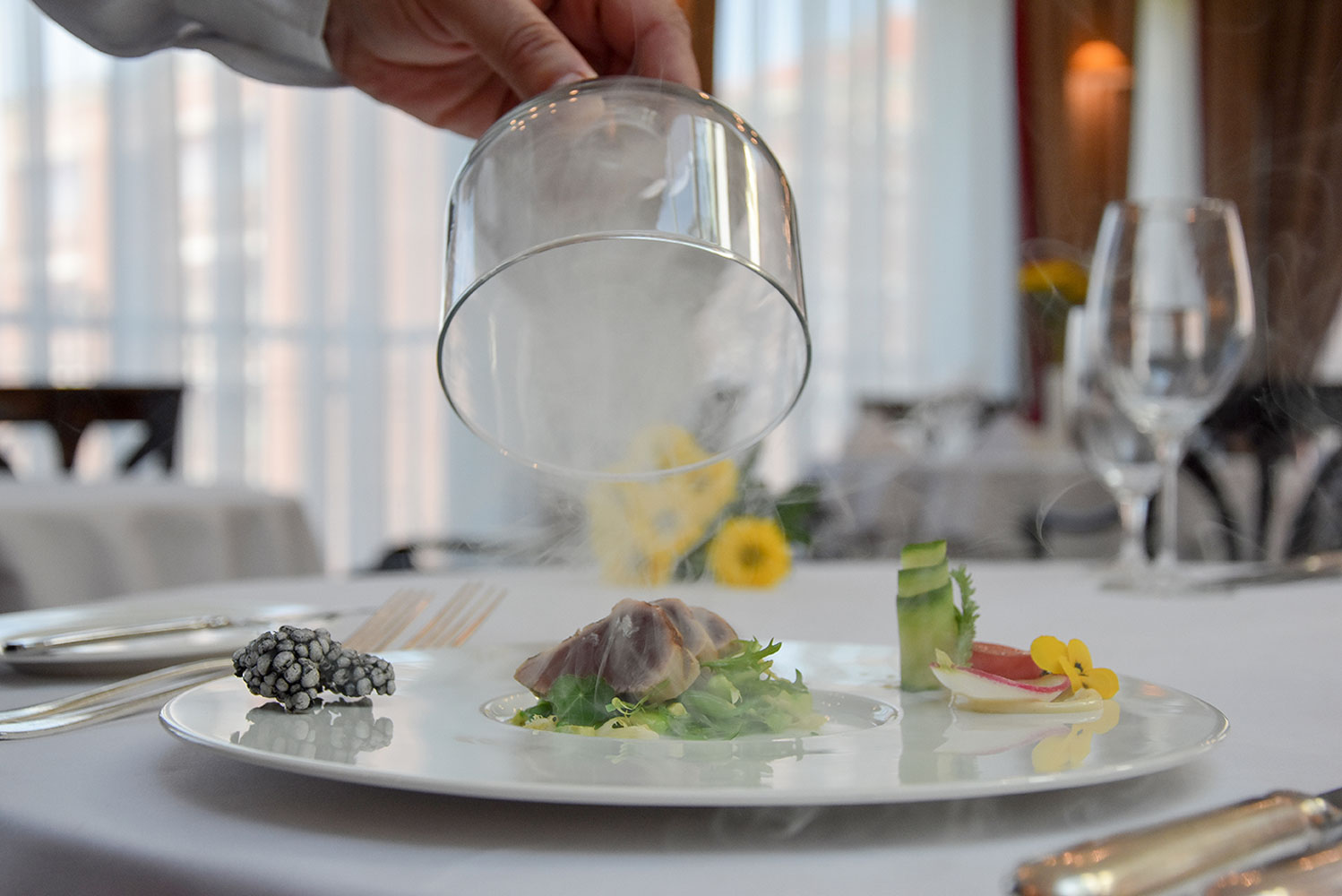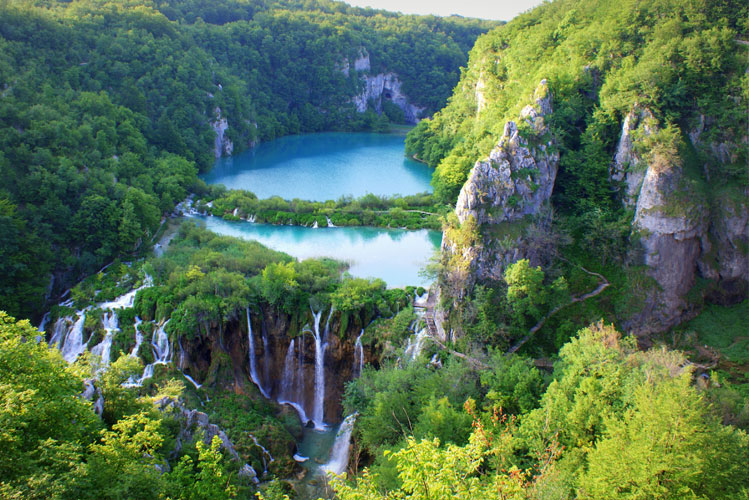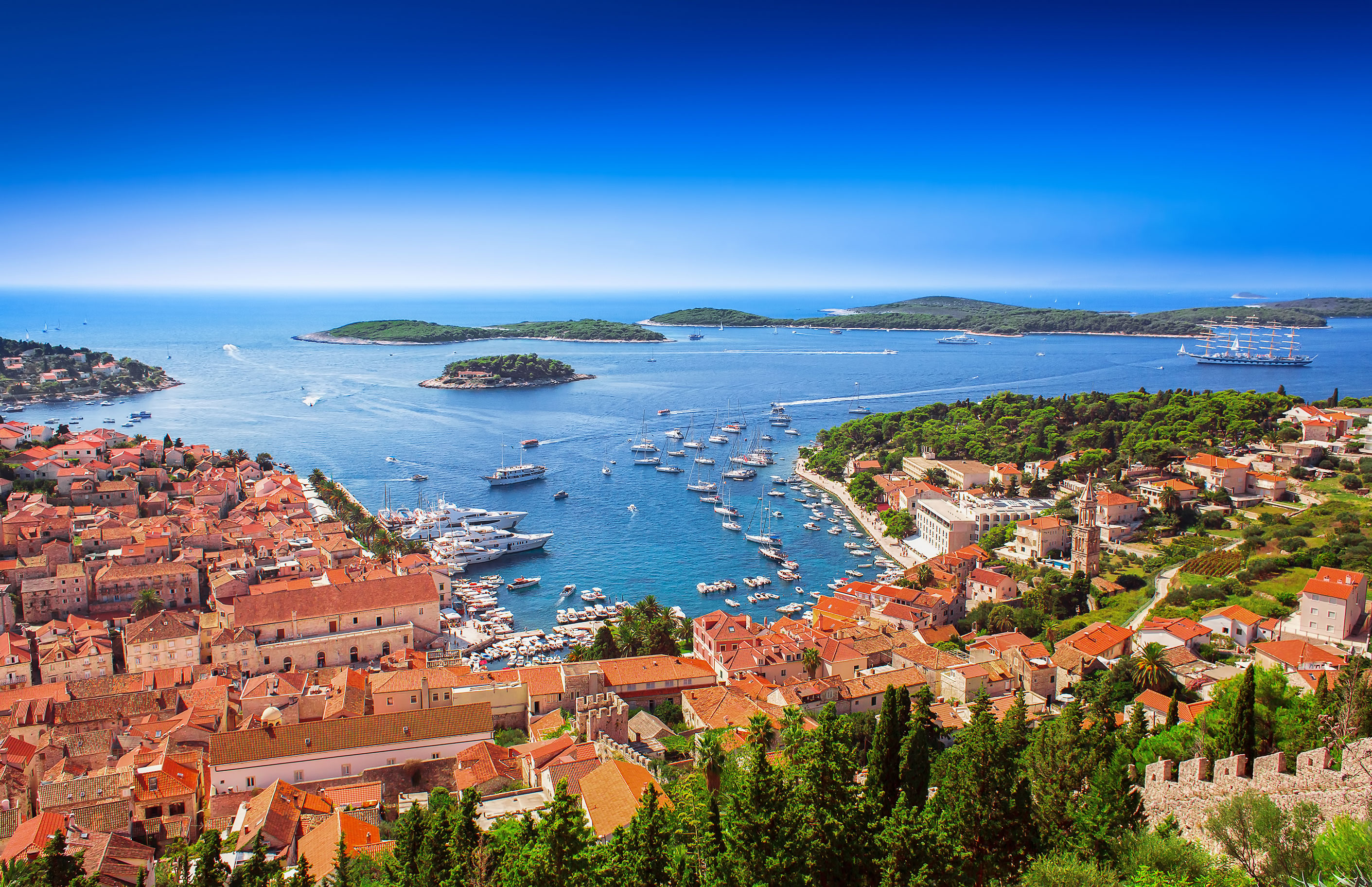Magnificent Attractions of the City of Split
by Welcome Center Croatia | Last updated Feb 20, 2022 | Published on Feb 20, 2022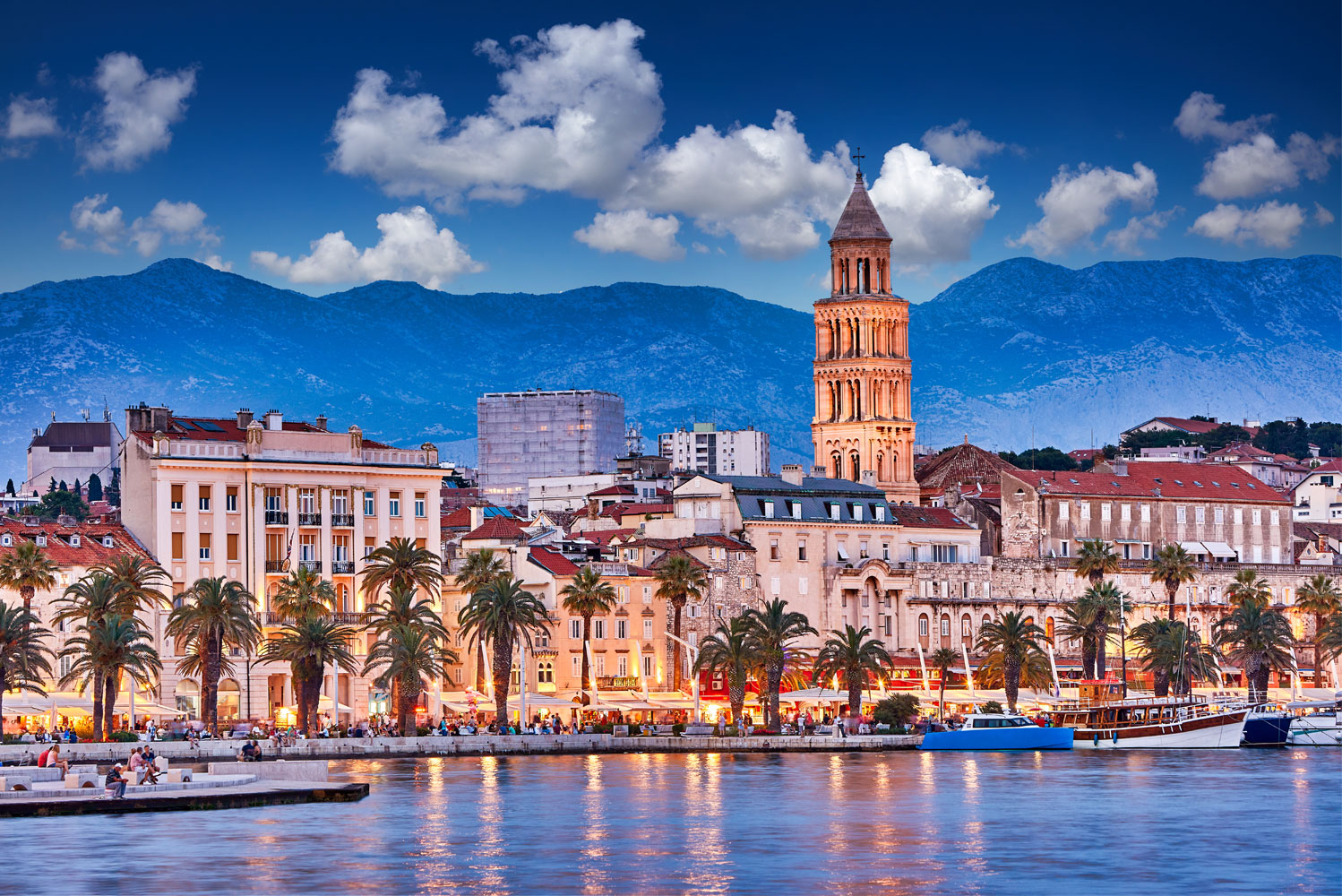
Content table
Set on Croatia's gorgeous Dalmatian Coast, Split is the country's second-largest city and a vibrant place that perfectly blends modern and ancient. It is also one of the Croatian cities used as a Game of Thrones backdrop, and fans of the hit show can join an organized tour to learn more about their favourite scenes.
The town has been continuously inhabited for thousands of years, starting with the Romans, followed by the Byzantines, Croats, Venetians, and finally, the Austrians, who only left in 1918. As a result of these diverse influences, you'll find plenty of historical things to do in the city's wonderfully preserved Old Town.
Split is also famous as the home of the UNESCO World Heritage-listed Palace of Diocletian, one of the most impressive remaining Roman monuments anywhere in the world. It's also where you'll find the first-rate Archaeological Museum, as well as what many consider to be Croatia's best art museum, the Ivan Mestrovic Gallery.
Just east of its pretty waterfront promenade is Split's main tourist centre. Here, visitors will find some of Croatia's top restaurants, entertainment venues, and hotels. Some excellent day trips are available from Split that take you to other nearby parts of this lovely country. These include visiting the ancient city of Salona and taking in the beautiful beaches of Zlatni Rat, Brela, the Pakleni Islands, Solta, and Milna.
Find the best places to visit in and around the city with a list of the top attractions and things to do in Split, Croatia.
Take a tour of the Diocletian's Palace
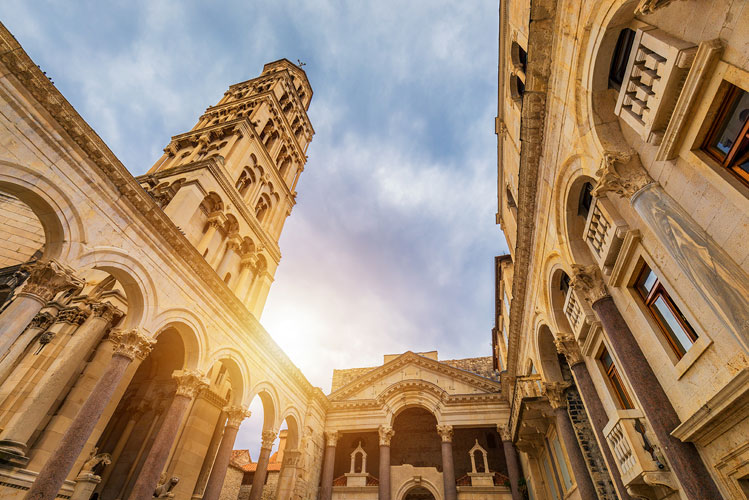
The best site to start with is the Diocletian's Palace (Dioklecijanove palace). The UNESCO preserved Roman-built historical site in Split. Its architectural style military camp style is a sight to see. In addition, it is the backdrop setting of the famous television show Game of Thrones, making it worth being number one on your site list.
The palace served as the Emperor's residence for eight years until AD 313, when he passed away. It was continually utilized as the administrative centre and governor's home. In AD 615, when the Germanic Avars attacked the city of Salona, the palace served as their refuge.
Initially serving as the Emperor's home, the Diocletian Palace meant it had to be built as a strong fort. The palace boasted 215 meters long, 180 meters wide, and it was enclosed with thick walls reaching 28 meters high. In each corner, towers offered extra protection. The Golden Gate, Silver Gate, and Iron Gate were the entrances, and from each entry, in respect to Roman tradition, two roads are laid out.
The Diocletian Palace is not just a site by itself, but it is also a host of other magnificent features within it. These include the Temple of Jupiter, Cathedral of St. Dominus, medieval Brace Radica Square with the 15th century Marina Tower, 17th-century Milesi Palace, and the founder of Croatian literature's statue, Marko Marulic.
A more exciting way of getting a tour of the palace while sampling the wide variety of culinary delights is through a walking tour of the city. In addition, there are well-trained tour guides who speak fluent English and give further incites and thrilling descriptions of the city's landmarks.
The Cathedral of St. Domnius
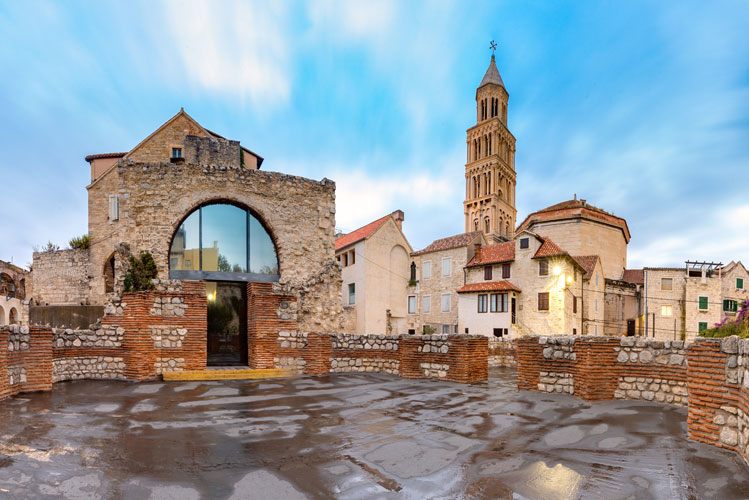
Another magnificent structure, drawn by Filotas and built in the 7th century, is the Cathedral of St. Dominus. It is another historical monument found within the area of The Diocletian Palace. The Cathedral was initially built as Diocletian's mausoleum.
Since being built, the Cathedral has had a minimum of changes around it, including a 60-meter tall bell tower constructed through the 12th to 16th centuries. The building does offer an extra activity where it can be climbed to get to see the scenic views of the palace.
The Cathedral was constructed in a beautiful Corinthian design. When observed, it shows an octagonal pattern with a double line of columns, some being Roman originals. Within the Cathedral, there are more placements, the most valuable being the Altar of St. Domnius and the 13th-century hexagonal Romanesque stone pulpit.
Learn about Ivan Mestrovic, Croatia's greatest artist
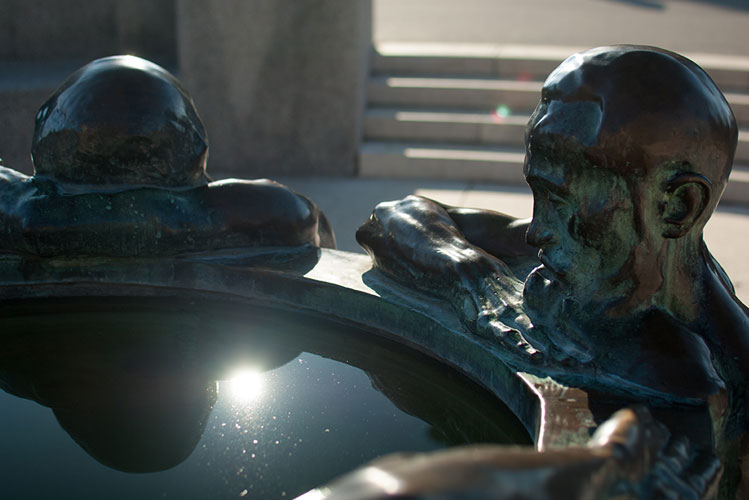
Ivan Mestrovic is Croatia's most praised artist. His art pieces can be found all across the city, but the place to experience his breath taking art is at the gallery named after him, The Ivan Mestrovic Gallery. Mestrovic was also recognized as a skilled sculptor in the 20th century, and he is credited for the design of the art gallery.
The Ivan Mestrovic Gallery was initially the artist's residence in the 1930s and later converted into the famous art gallery in 1952. The gallery's first painting was an art piece given by the artist himself. Some of the brilliant artworks in the gallery include 86 marble statues carved in marble, stone, bronze, wood, gypsum, and several drawings.
Before leaving the gallery, one can walk through the gardens to view the well-placed eight colossal bronze statues.
Climb up to Marjan Forest Park and the Marjan Stairway
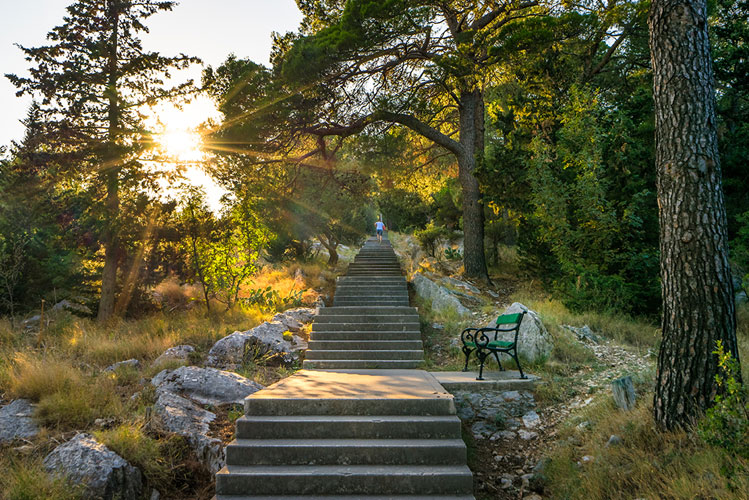
One of the best natural facilities found in the city of Split is the Marjan Forest Park sitting on a peninsula above the town. A 15-minute stroll easily reaches the park through the city and the old quarter of Varos.
It provides the perfect destination for locals or tourists who like a good walk or jog in nature. The beautiful park has towering pine trees that create a beautiful canopy covering the paths and benches while providing a peaceful picnic area and watching the sunset.
Inside the park is the well-known Marjan Stairway. The stairway at the height of 174 meters has 314 steps, then climb up the steps may seem long, but trust yourself to take on the challenge cause at the top is where everything comes full circle with a beautiful reward of scenic views. Make sure to choose the perfect sunny clear day to climb the steps. From the top, you will have a view of the Katana Gulf, Salona and Klis, Trogir and Ciovo, the islands of Solta, Brac, Hvar, and Vis. If the steps will not be a challenge to you, there is a rock climbing spot on the cliff below the lookout.
Dig Up Some History at Split Archaeological Museum
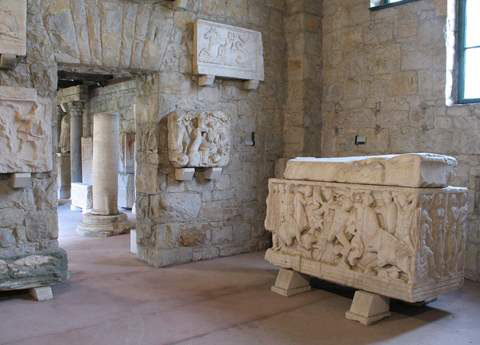
All history lovers should have the Archaeological Museum at the top of their site attractions visit in Split. The museum was established in 1820 and has stood at its original location since 1922, marking it the longest-standing institution in Croatia.
In the museum, precious artifacts noting Croatia's history are held, including the country's most extensive gems collection, stone carvings from Salona, Greco Hellenistic ceramics, Roman glass, around 1,600ancient clay lamps, number of bone and metal objects. Before leaving, pass by the museum's beautiful garden.
The Storm Klis Fortress
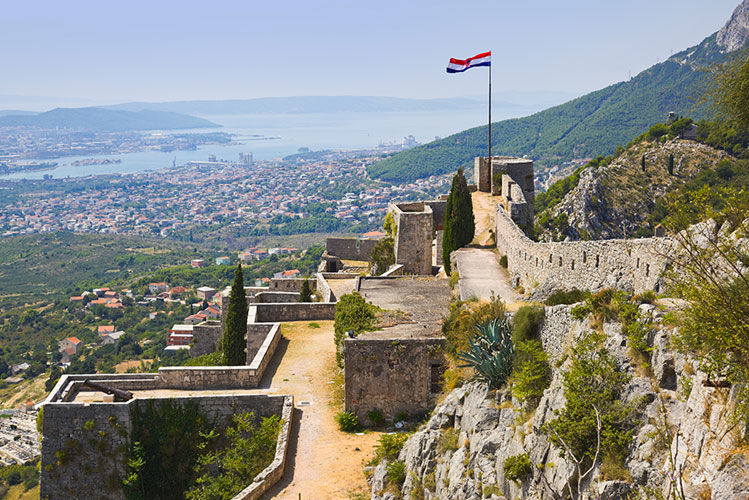
Another site worth visiting is the Storm Klis Fortress northeast of the town, easily accessible by city bus number 22, boarded at Split's bus station. All Game of Thrones fans will recognize the castle as the City of Meeren.
The fortress's height can be attributed to a long time it has been in existence which has been met with constant extensions. The fortress sits along a limestone bluff of 385 meters and controls the valley going into town.
The museum holds the best historical displays of the castle's past, including the traditional costumes and weapons. There is more, especially for the Game of Thrones fans, a room where the show is filmed, visitors are allowed to view and climb over the set pieces inside.
Visit Trogir
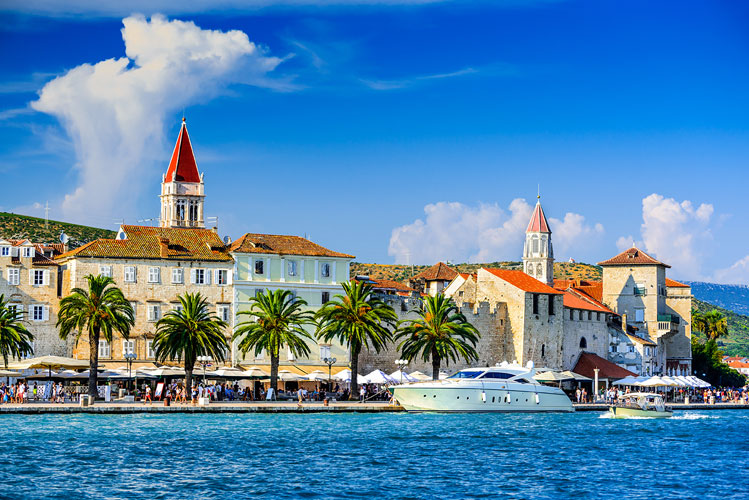
Trogir is a site that all will love, definitely worth putting on your list.
The architecture still stands steady, and the walls built in the 15th century still protect the sprawled streets with buildings that have remained the same since the 1200s.
Trogir is another UNESCO site that has maintained its looks since medieval times.
Located near Trogir are ten historic churches in the ancient centre. The 13-th century cathedral is one of them.
Get Cultured at the Croatian National Theatre
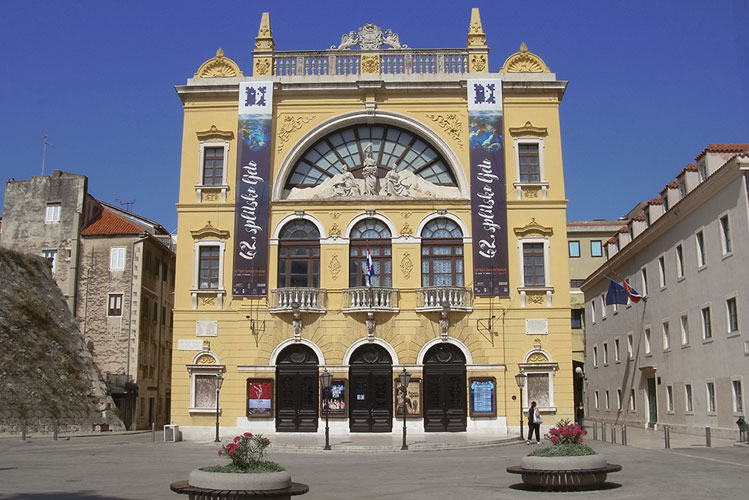
The Croatian National Theatre in Split (HNK Split), a treasure of the Croatian Nation, is one of the ancient monuments in the country. Established in 1893, it continues to be an essential part of the city when it comes to displaying its beautiful arts and cultural composition.
When it comes to the beautiful arts in music and performances, the Croatian National Theatre is the place to visit. It hosts a comprehensive program exceeding 300 concerts yearly, from ballet, theatrical performances, and classical musical music performed by a local symphony orchestra.
At the theatre, festivals are hosted; Split Summer Festival (Split Ijeto), Days of Marulic (Maruliceyi Dani), a weeklong celebration of Croatian literature.
Visit The People's Square
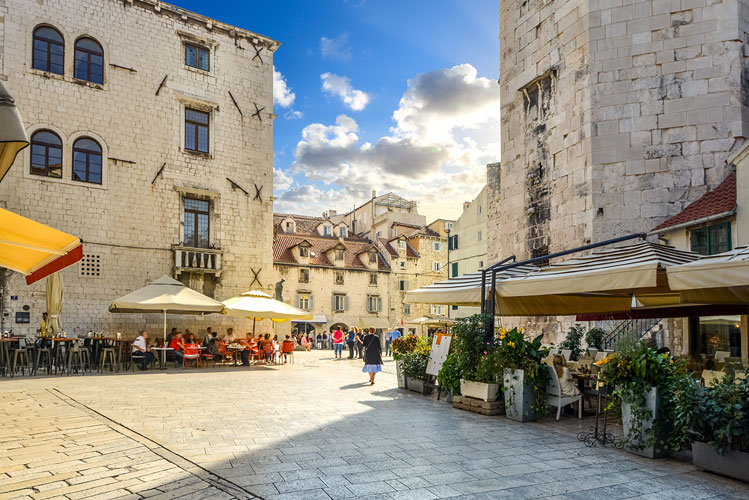
The People's Square is located near the Diocletian Palace west of the Peristyle. A social tour of Split can be done at the People's Square (Nardoni Trg Pjaca).
There are many exciting things to see, like Renaissance, Venetian, and Gothic constructions from the 15th century.
The ones that should not be missed while at the square are the Venetian-Gothic Cambi Palace, Renaissance-style Town Hall building, home to the scenic Ethnographic Museum of Split, and the sculptured monument Grgur Ninski created by well-known Ivan Mestrovic.
The Church of St. Dominic
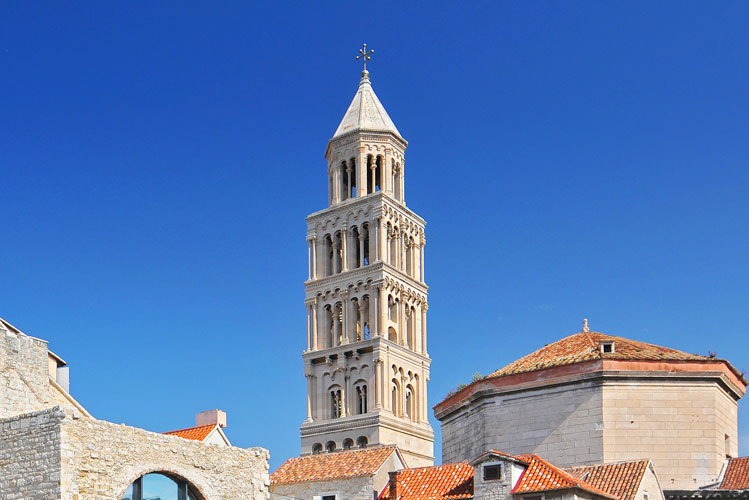
This beautiful church was built in the middle ages, reconstructed in the 17th century, and made more prominent in the 1930s. The church is located on the former Oratory of St. Catherine. Inside the confines of the beautiful church is an artwork by Plasma il Giovane, the famous Miracle in Surian and Apparition in the Temple.
Near the church is a marketplace hosting a variety of fruits, vegetables, cheeses, and meats originating from different parts of Croatia.
As a bonus, while shopping, a good view of the Palace of Diocletian can be seen from the marketplace.
The Statue of Grgur Ninski

The statue of Grgur Ninski holds beautiful religious history behind it, and it is worth visiting to hear about it.
The creator of the magnificently colossal statue is the renowned artist sculptor Ivan Mestrovic.
Grgur Ninski's sculpture was created in honour of his work, spreading Christianity in Croatia and establishing Croatian National identity.
Residents of Croatia and tourists find their way to the statue to rub the big toe for good fortune, hence the toe getting a shiny sparkle from all the rubbing.
The Baptistery of St. John and the Papal Palace

Hosted inside the Diocletian Palace is the Baptistery of St.John and the Papal Palace. Initially, a Roman religious place called the Temple of Jupiter. The baptismal font has many remarkable features, having King Zyonimir, other dignitaries, Ivan Mestrovic's carvings are included too on the sculpture of St.John.
In the previously Gothic Papalic Palace, some features from the 8th and 11th centuries and some exciting artifacts retrieved from the Baptistery of St. John and Diocletian Palace can be seen at the Museum of Split (Muzej Grada Split).
One of the most creative and outstanding buildings found in the aired areas of the Diocletian Palace, the museum is home to the best collections of books that illustrate the history and weapons used during the 15th to 18th centuries.
Enjoy a Day Trip to the City of Salona
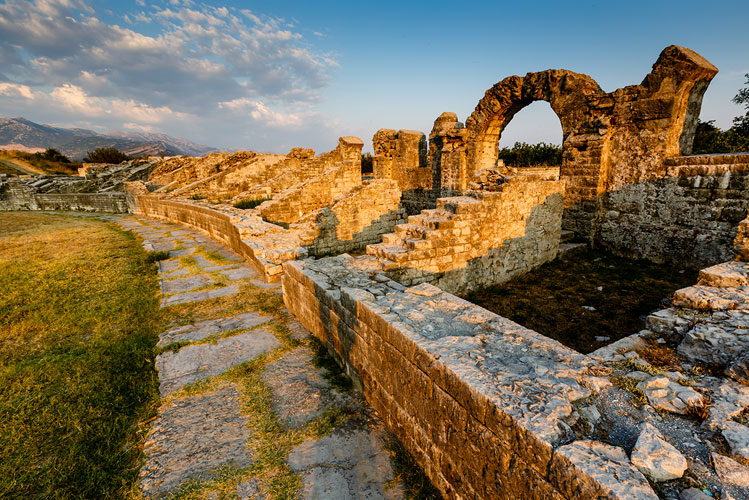
Another site for history lovers is the ancient city of Salona.
The city served as the home of different populations, from the Illyrians, Greeks, and Romans, making it a plethora of historical sites surrounded by old city structures, among them its amphitheater, aqueduct, Bishop's complex, and forum.
The Romans built the city, and the most remarkable feature was the amphitheater with a massive capacity of 20,000 individuals with an intricate underground that was rumored to be the stage of mock fights.
The Salona Aqueduct had its share of features where it is said to have taken water from the river Jadro to Split, taking it to the Diocletian's Palace.
Discover the Ethnographic Museum
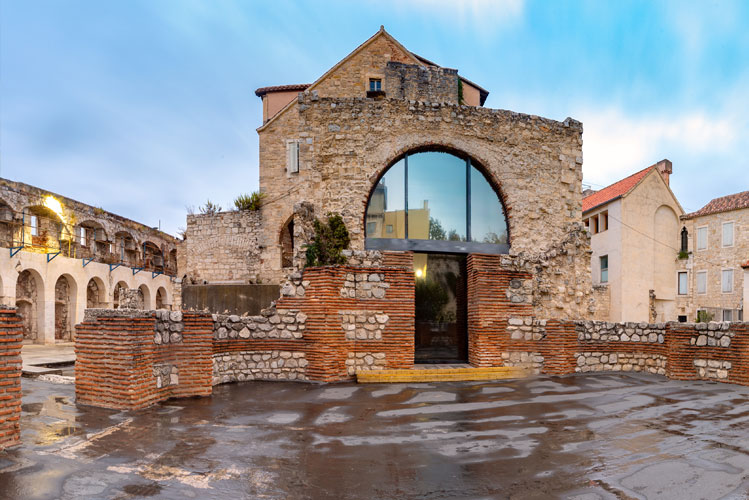
This museum has the best blend of being a historian's paradise and a daily tourist destination.
Inside, the museum hosts collections of rustic furniture, traditional clothes, and a Roman-era staircase where one is granted a beautiful view of the beautifully designed roofs of Split and the Adriatic falling behind it.
By going up the steps, you get to have a little bit of privacy away from the effect of Dalmatian ethnography. It is like having your private view in the city of Split.

